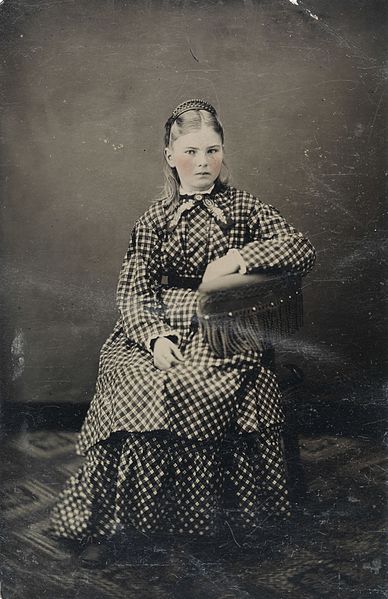
Word of the Day: Calico
Paul Schleifer
The dictionary.com definition of calico is “a plain-woven cotton cloth printed with a figured pattern, usually on one side.” That’s in America. In Britain, it is a plain white cotton cloth. Or, calico can refer to an animal with spotted or particolored fur, usually a cat.
The word comes into English in the early 16th century from trade between Europe and India. Kozhikode, or Calicut, is a city in the state of Kerala in southern India on the Malabar Coast. It was one of the major ports for trade between India and England, and the Europeans imported a cotton cloth from Kozhikode which was referred as “calicut cloth.”
According to Wikipedia, “Calico (in British usage since 1505) is a plain-woven textile made from unbleached and often not fully processed cotton. It may contain unseparated husk parts, for example. The fabric is far less fine than muslin, but less coarse and thick than canvas or denim, but it is still very cheap owing to its unfinished and undyed appearance.
“The fabric was originally from the city of Calicut in southwestern India. It was made by the traditional weavers called cāliyans. The raw fabric was dyed and printed in bright hues, and calico prints became popular in Europe.”
So a couple of things happen to the word that are typical of linguistic change. One is change due to the Principle of Least Effort, where pronouncing the “t” right before the “k” of “cloth” is, perhaps, a bit more effort than most speakers want to exert, so the “t” sound gets eliminated. Eventually, since the word comes to refer specifically to the cloth, the word cloth becomes redundant and is also dropped. Then the word undergoes generalization, in which the meaning of the word broadens from cloth specifically from Kozhikode or even India to any cloth that comes from the East.
An interesting divide in the meaning exists between the U.S. and the U.K. In the U.K., calico refers to the cloth that comes from the East, but in the U.S. it comes to mean any patterned cotton cloth. The fabric that traveled from Kozhikode to England was often brightly colored, at least on one side of the cloth. But the English focus on the cloth’s provenance rather than its appearance, while the Americans apparently do the opposite.
And I would imagine that it is the American understanding of the word that gets us to “calico cat,” a cat with a patchwork of color. I don’t think I’ve ever heard of a calico dog, or a calico ferret, or a calico hamster—if you have, please feel free to contact me through the website or at pschleifer@swu.edu.
Now, here’s what has me a bit surprised about calico showing up as the word of the day today.
I have a 22-month-old granddaughter whom I take to daycare just about every weekday. And often, as we drive along, we sing songs. She is a pretty remarkable singer for a 22 month old. She sings “Rain, Rain, Go Away” (though not all of it), “Row, Row, Row Your Boat,” and “Baby Shark.” So Tuesday morning a song unexpectedly popped into my head, one that my dad used to sing to me and my siblings when we were little, especially on weekday mornings as we prepared unwillingly for school. If you’re really old, like me, perhaps you remember it, too.
School days, school days
Dear old Golden Rule days
‘Reading and ‘riting and ‘rithmetic
Taught to the tune of the hick’ry stick
You were my queen in calico
I was your bashful, barefoot beau
And you wrote on my slate, “I Love You, Joe”
When we were a couple o’ kids.
“School Days” (1907) was written by Will Cobb and Gus Edwards about a mature couple looking back on their childhood.
And now you know what calico is.
The image is a “Portrait of a seated girl. Her rosy cheeks have been hand-tinted.
Photographer: Unknown.”